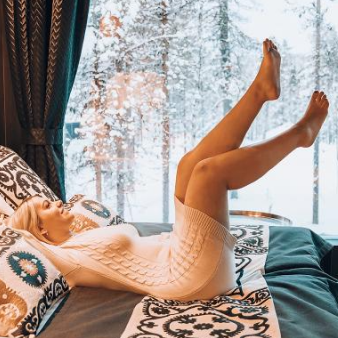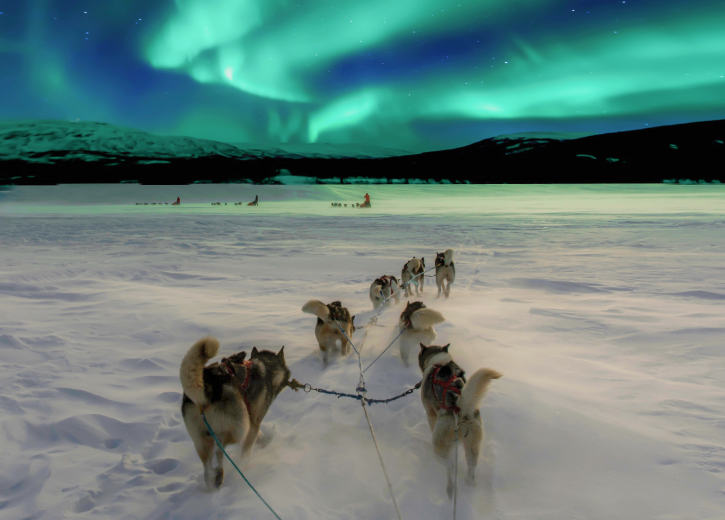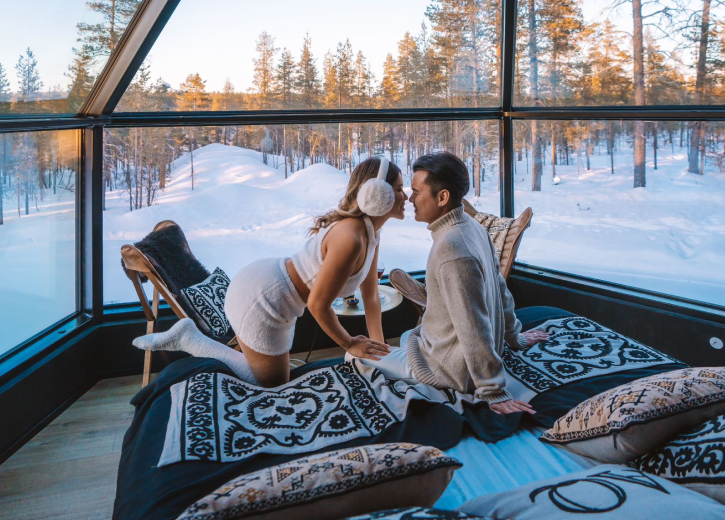The northern lights (aurora borealis) typically last anywhere from a few minutes to several hours during a single viewing. Most displays persist for 15-30 minutes, followed by a period of quiet before potentially reappearing later the same night. The duration largely depends on the strength of solar activity, local weather conditions, and geographic location. In prime viewing areas like Finnish Lapland, aurora displays may dance across the sky throughout the entire night during peak season, creating an unforgettable natural spectacle.
Understanding northern lights: Nature’s magical light show
The northern lights represent one of nature’s most breathtaking phenomena, appearing as shimmering curtains of colourful light that dance across the dark arctic sky. This magnificent display occurs when charged particles from the sun collide with gases in Earth’s atmosphere, creating luminous emissions that appear as green, blue, pink, and purple waves.
Finnish Lapland sits directly beneath the “auroral oval” – a ring-shaped zone around the Earth’s geomagnetic poles where aurora activity is most concentrated. This prime location, combined with minimal light pollution and long periods of darkness during winter months, creates ideal conditions for observing the northern lights. The pristine wilderness setting enhances the viewing experience, where silent forests and frozen landscapes provide a perfect backdrop for the celestial performance overhead.
While these magnificent lights have inspired wonder for centuries, each display maintains its unique character – sometimes appearing as gentle, pulsing glows, and other times as dramatic, rapidly moving curtains that seem to dance across the entire sky.
How long do northern lights typically last during a viewing?
The duration of northern lights displays varies considerably, typically ranging from brief 10-minute appearances to spectacular shows lasting several hours. Most commonly, viewers experience distinct aurora phases lasting about 15-30 minutes, followed by a quieter period before activity potentially resumes. This pattern can repeat throughout the night, creating multiple viewing opportunities during a single evening.
When solar activity is particularly strong, aurora displays may persist continuously for 3-4 hours or even longer. During peak season in Lapland, it’s not uncommon for lights to appear intermittently throughout the entire night, though their intensity and visibility will fluctuate. The most dynamic displays – when the lights appear to dance rapidly across the sky with changing colours and patterns – typically last 5-15 minutes within a longer overall viewing period.
It’s important to understand that the northern lights are unpredictable. Some nights might offer only fleeting glimpses, while others could present marathon sessions of auroral activity. This unpredictability is part of what makes witnessing the aurora such a special experience – each display is unique in its duration, intensity, and visual characteristics.
What factors affect the duration of northern light displays?
Several key factors determine how long the northern lights remain visible during any given display. The most significant influence comes from solar activity – specifically, the strength and frequency of solar storms and coronal mass ejections from the sun. Stronger solar events produce more charged particles interacting with Earth’s atmosphere, potentially creating longer-lasting and more vibrant displays.
Local weather conditions play a crucial role as well. Clear, dark skies are essential for optimal viewing, and cloud cover can obscure even the most powerful aurora. Finland’s Lapland region benefits from relatively stable winter weather patterns, offering many clear nights ideal for extended aurora viewing.
Geographic location significantly impacts duration and visibility. Areas under the auroral oval, like northern Finland, experience more frequent and longer-lasting displays than locations further south. Even within optimal viewing regions, factors such as:
- Local light pollution levels
- Moon phase and brightness
- Surrounding landscape features
- Elevation and viewing angle
The strength of the Earth’s geomagnetic field also fluctuates, affecting how the charged particles are distributed in the atmosphere. During periods of high geomagnetic activity, auroras can extend further south and last longer than usual, creating rare opportunities for viewing outside the typical aurora zones.
When is the best time of night to see the northern lights?
The optimal viewing hours for northern lights typically fall between 10 PM and 2 AM local time, when auroral activity tends to be at its peak. However, in Lapland during the winter months, the extended darkness creates potential viewing opportunities from as early as 6 PM until 6 AM the following morning. The magnetic midnight (around 11:30 PM to 12:30 AM in Finnish Lapland) often produces the most spectacular displays.
Seasonal variations significantly impact viewing times. From late August through April, Lapland offers dark enough conditions to see the aurora, but the prime months are September-October and February-March when weather conditions typically provide clearer skies. During the polar night period (approximately December-January), darkness extends throughout most of the day, theoretically allowing for aurora viewing at any hour if they’re active.
Patience is essential when aurora hunting. Even during optimal hours, the lights often appear in cycles, with periods of activity followed by quieter phases. A full night of observation might include several distinct display periods of varying intensities and durations. Local wildlife, like the occasional fox crossing snowy fields, adds to the magical experience of waiting for the lights to appear.
| Time Period | Aurora Viewing Potential | Typical Activity Pattern |
|---|---|---|
| 6 PM – 10 PM | Moderate | Often the beginning phases of activity |
| 10 PM – 2 AM | High | Peak viewing hours with strongest displays |
| 2 AM – 6 AM | Moderate to High | Can continue with strong displays or gradually fade |
How can you maximize your chances of seeing the northern lights?
To maximize your chances of experiencing a lengthy northern lights display, planning multiple viewing nights is essential. A stay of at least 3-4 nights in an aurora zone significantly increases your likelihood of witnessing a memorable display, as both weather conditions and solar activity vary from night to night. Flexible itineraries allow you to adapt to the unpredictable nature of the aurora.
Utilising technology can greatly enhance your aurora hunting success. Several reliable aurora forecast apps and websites monitor solar activity and provide predictions about visibility. These tools can help you determine not just if the lights might appear, but potentially how long and intense the display might be on a given night.
Your viewing location makes a tremendous difference in the experience. The best settings include:
- Places away from artificial light pollution
- Accommodations with northern exposure and unobstructed views
- Elevated positions that provide horizon-to-horizon visibility
- Locations beneath the auroral oval, like Finnish Lapland
Glass-ceiling accommodations in Lapland offer a particularly comfortable viewing experience, allowing you to watch for the lights while staying warm. This means you can comfortably monitor the sky throughout the night, even during those times when the temperature drops well below freezing. Having proper equipment—warm clothing, a camera with appropriate settings for night photography, and perhaps a thermos of hot tea or coffee—ensures you can remain outdoors comfortably if you choose to experience the aurora in the open air.
Northern lights viewing: Planning your perfect aurora experience
When planning your northern lights adventure, understanding the typical duration patterns helps set realistic expectations. Remember that displays commonly last 15-30 minutes before pausing and potentially reappearing, and that optimal viewing typically occurs between 10 PM and 2 AM. Booking accommodation specifically designed for aurora viewing—such as those with panoramic north-facing windows or glass ceilings—allows you to maintain vigilance throughout the night without braving the cold continuously.
The northern Finnish wilderness provides an ideal setting for aurora hunting, with its combination of clear, dark skies and pristine snow-covered landscapes. The contrast of the dancing lights against snow-laden pine trees creates a truly magical atmosphere that enhances the overall experience. Keep watch for local wildlife like foxes that sometimes make appearances during your aurora vigil, adding another layer of wonder to the experience.
While the northern lights themselves are unpredictable in their timing and duration, proper preparation maximizes your chances of witnessing a spectacular display. A successful aurora viewing experience combines patience, flexibility, comfort, and a sense of adventure. When the lights do appear—whether for minutes or hours—the memory of watching nature’s most magnificent light show will remain with you long after your journey through Lapland concludes.



